
Contents
-
The connected Customer Experience
Organisations are a complex maze, but the customer’s mind is even more so! The sooner organisations and brands understand this, the better. Delivering tomorrow’s connected experience tomorrow might just be too late. The customer is living in the moment and organisations need to equip themselves to respond to this reality. This is where MarTech is stepping in.
To thrive in these dynamically evolving times, brands need to come up with completely new ways of looking at customer relationships. This involves deep capabilities in managing data, big data analytics, investing in the right technologies as well as in being able to integrate these pieces together.
Over the last decade, customer expectations have increased on an exponential scale, resulting in digital channels transforming and evolving to become even more personalised. No longer are buyers interested in a purely transactional process (i.e., just buying a product), today audiences seek a customised connection and experience that goes along with that purchase. The customers today expect direct communication with the brands for faster answers and resolution. The increasing trend of tagging brands on social media platforms is the result of the same. For example, some customers who bought an insurance policy 5-6 years back may not be very clear of the minute details of the plan. They might prefer the insurer to give them all the answers they need as their agent is no longer in touch with them. The customers in this case prefer reaching out to the brand through various touchpoints. MarTech tools help marketers connect with customers at every stage of the marketing funnel to help them navigate the customer journey. This has led to a strong need for organisations to assimilate different MarTech tools into a custom stack.
-
The same. For example, some customers who bought an insurance policy 5-6 years back may not be very clear of the minute details of the plan. They might prefer the insurer to give them all the answers they need as their agent is no longer in touch with them. The customers in this case prefer reaching out to the brand through various touchpoints.
MarTech tools help marketers connect with customers at every stage of the marketing funnel to help them navigate the customer journey. This has led to a strong need for organisations to assimilate different MarTech tools into a custom stack.
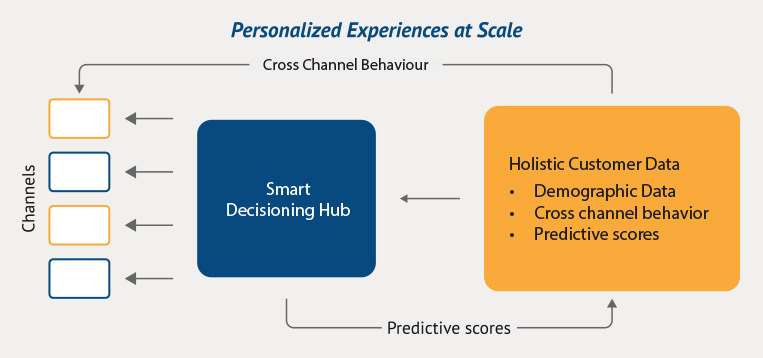

-
Case Study 1

Brand/Company Name: Aditya Birla Sun Life AMC Category/Industry: Mutual Funds Title: Building and automating a successful customer engagement platform for better marketing ROI Agency Hansa Cequity About this case study
How Hansa Cequity helped Aditya Birla AMC build an integrated customer engagement platform that enabled them to raise their marketing productivity and efficiency by 2X and helped in generating higher growth and ROI by building better customer lifecycle management programs
Context
Customers engage with a brand across various touchpoints in their buying and engagement journey. Delivering the right engagement at each touchpoint is essential for a right customer experience. For Aditya Birla Sun Life AMC, customers and their distribution partners were equally important and building right engagement for them were critical parameters for the success of marketing initiatives.
Challenge/Problem
When it came to engaging more than 8 million customers across different cohorts, products, and segments along with multiple distribution channel partners, it was not an easy task. The biggest challenge faced in delivering exceptional customer centric engagement was the gaps in customer journey which was due to non-availability of an integrated view and solutions that can leverage the same efficiently. There was a great opportunity to drive a meaningful and personalised engagement across key stakeholder segments (customers and distributors) that can help in better marketing ROI.
-
Two key challenges/opportunities were identified, that needed to be addressed on priority -
1. Building an Integrated Engagement platform to bring all relevant capabilities of creating, executing, and measuring customer engagements across key touchpoints. This will also enable faster turnaround time and avoid the problem of siloed engagements 2. Faster time to build and launch engagement campaigns/programs. The second challenge was to put a system in place that ensures a quick TAT in deploying, measuring and fine-tuning the customer engagement campaigns. The challenge increased manifold in the light of the enormity of tasks involved. A project to solve this problem would simply need minimum 8 to 12 months to implement and another 3 - 4 months for results to start showing Key objectives
1. Better Customer engagement through hyper personalisation and automation engagement: Engage the large base of existing customers as well as prospects and deliver personalised communication 2. Better ROI: Increase the business’s ‘share-of-wallet’ for these customers by increasing Customer Lifetime Value 3. Seamless and Integrated Solution: Build seamless customer experience through an integrated solution The Big Idea
The idea was to map the entire customer journey and plan and automate interventions wherever possible. This would help in reducing the customer engagement time to as close to real time as possible. The idea was the combination of strategy and technology and was executed in record time. This resulted in creating a seamless customer experience and getting to the desired business outcomes.
-
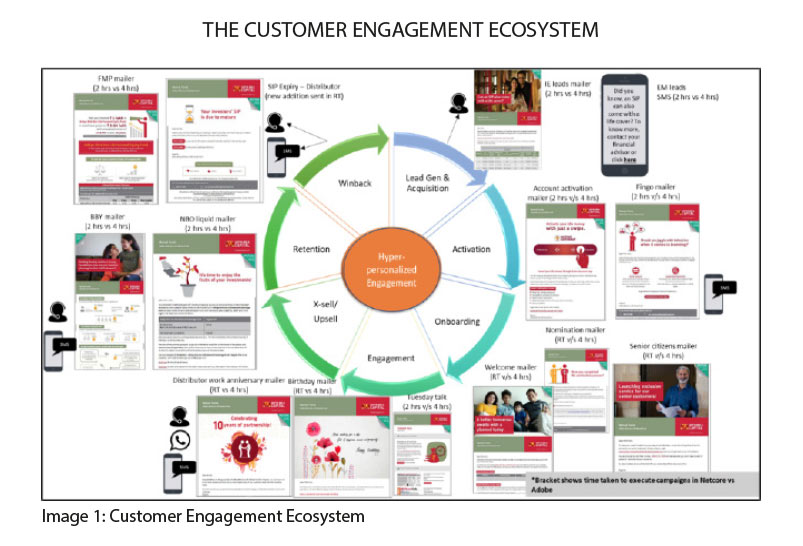
Execution/implementation of the idea
The project implementation delivered on two key fronts
1. Mapping the customer journey 2. Designing Campaign Approach: Building customer engagement and automation to bring down the execution timelines 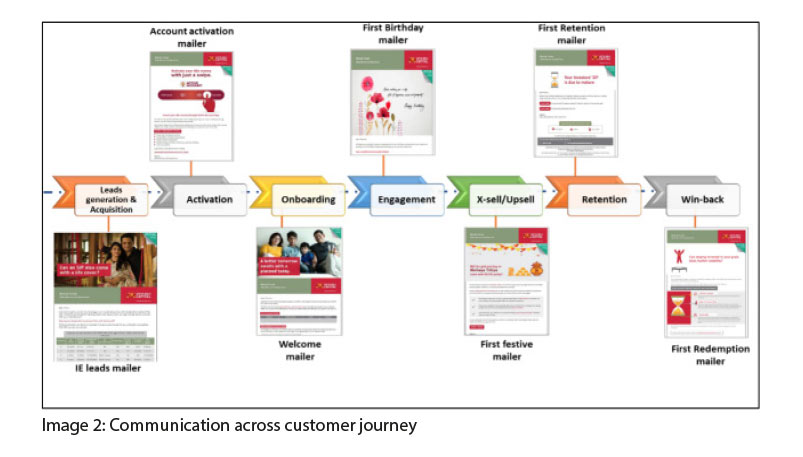
-
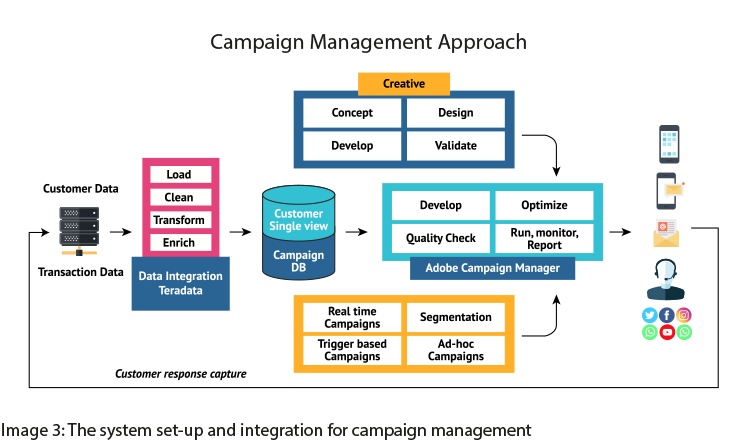
Key steps in the project implementation Journey:
• Touchpoint and platform audit: This was executed to integrate the best of all platforms – offline and online to the business environment • Stakeholders views: Views and experiences from multiple teams interacting with customers were onboarded on this platform to create a seamless business understanding • Customer audit: Various segments of customers, their expectations and engagement experiences were mapped to the solution architecture to create effective campaign solutions • Data integration: Customer behaviour data from various sources was integrated to provide a unified single view of the customer that was updated in the main database • Building use-cases and workflows: This stage involved finalising use cases with the business. This was additionally facilitated by providing multiple walkthroughs of the tool to make the business better understand the tool capabilities -
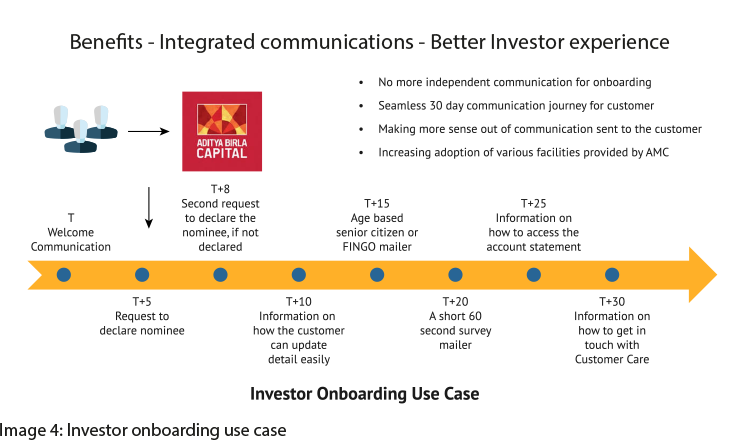
Hyper personalisation and Automation
To drive hyper personalised customer engagement, Hansa Cequity created many engagement opportunities by analysing customer data and mapping engagement opportunities across customer journey to deliver hyper personalised communication. Few key steps were
• Automation: Automated campaigns were executed to reach customer in a seamless and in time manner • Trigger based campaigns: Trigger based communication to react to customer behaviour were executed to create customer delight and stop the break in customer journey. For e.g. the distributor milestone mailer. If the distributor completed a milestone, he/she would get requisite mailer early morning next day. These were all automated and did not need any human intervention -
Key results and outcome
The project was implemented in record time and was integrated across platforms seamlessly. It had a high impact on key business KPIs and was successful in achieving key objectives.
Key results include:
• Integration: It successfully integrated multiple data and customer touchpoints to create a seamless engagement platform. At present, the campaign platform was integrated with below systems: Data warehouse (Teradata), CRM (Mutual Fund CRM), API Server, FTP Server, business websites, business applications, survey forms, and results • Automated engagements: This project created capabilities to engage customers via automated and trigger-based communication across the customer life cycle – onboarding to retention to win-back • Share of wallet: With the help of Adobe and CRM integration, an additional lift in revenue was generated via the CRM leads created through campaigns executed from Adobe platform • Customer single view helped the business in segmenting and tracking engagement on a regular basis • Reports and dashboards: Multiple report and dashboards that could help business take necessary action at micro segment level to fine tune the customer engagement


